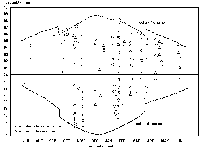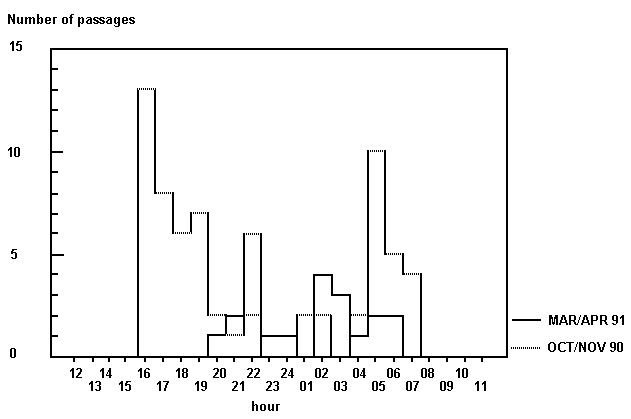 |
Last Update:
Friday November 23, 2018
|
| [Home] |
|
Volume 7 Pages 1 - 43 (February 1992) Citation: Madsen, A.B. (1992) Automatic Registration of Otter Activities in Denmark IUCN Otter Spec. Group Bull. 7: 38 - 39 Automatic Registration of Otter Activities in Denmark Aksel Bo Madsen National Forest and Nature Agency, Grenávej 12, Kalø, DK-8410, Rønde, Denmark
Registration of otters is usually carried out by counting spraints at preselected localities. Since 1987 regular registrations of the otter's marking activity have been made along the Skals, a river system in Jylland. The area around the lake Hærup Sø was found to be of particular interest, as the number of spraints in this area was extremely high (150 - 200 on a 200 m stretch). In many situations the necessity arises to acquire a more precise knowledge of variations in the animal's daily and seasonal activity than is obtained by the spraints alone. In an attempt to find out whether the large amount of spraints is a result of one or more individuals visiting the same place, the activity pattern was examined closely. The registrations were primarily based on 2 methods:
The equipment worked without failure even at temperatures as low as -15 °C. The time resolution of the disk is approximately 10 minutes, and the equipment will work for 8 days without inspection. The width and height of the infra-red barrier can be varied, thus allowing adaptation to registrations of fox, badger or deer.
The otter's activity (number of passages) appears to be firmly related to the sun's rising and setting times (corrections for summer time were made in September and March) (Fig. 1). The activity begins around dusk and continues until dawn. The electronic equipment was out of operation for some periods; however, the direct observations supplement the aggregated material very well.
The daily activity (number of passages) of otters in two different period, namely October/November 1990 (28 days) and March/April 1991 (30 days), are presented in Fig.2. In general there was a higher activity in October/November than in March/April, and for both periods the activity is highest in the hours after dusk and again in the hours before dark. In connection with counting of spraints, it would be desirable to be able to convert the number and the frequency of spraints into number of individuals. Studies are in progress to illuminate this aspect, and to connect infra-red photoregistration to the above-mention equipment. |
| [Copyright © 2006 - 2050 IUCN/SSC OSG] | [Home] | [Contact Us] |

